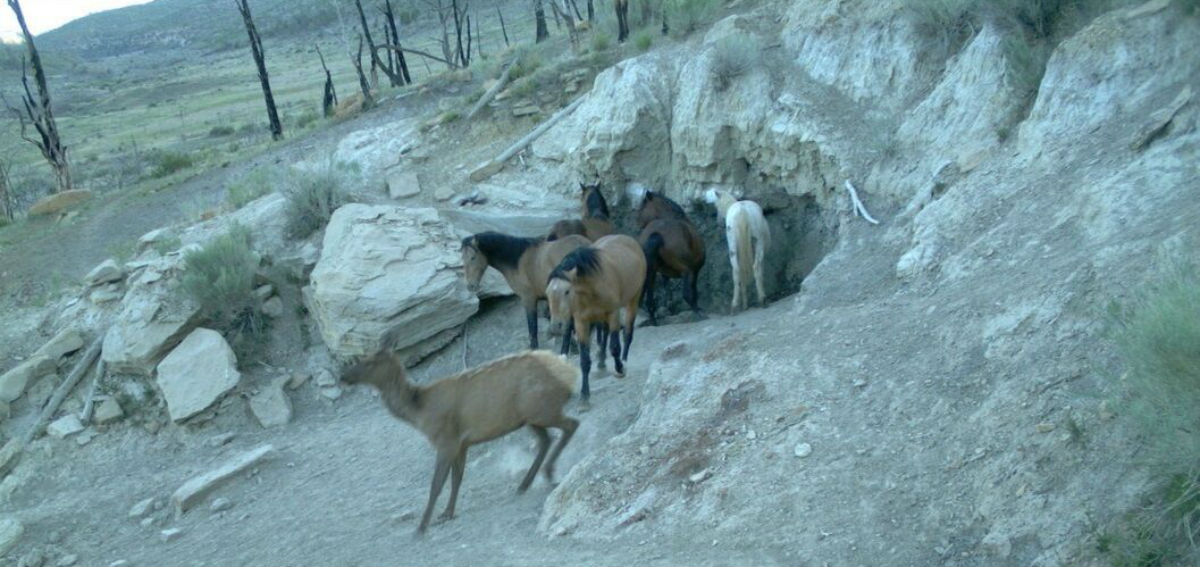The Rocky Mountain Elk Foundation maintains that unmanaged horse and burro populations negatively impact the health of both rangeland ecosystems and native wildlife habitat. Below is a an editorial from the staff of the Daily Sentinel newspaper in Grand Junction, Colorado, that addresses the issue.
A Sad Situation
By The Daily Sentinel
Tuesday, July 25, 2017
If any place in the West has an appreciation for wild horses, it’s Grand Junction.
Witness the metal horse sculptures that greet visitors exiting Interstate 70 at Horizon. They’re inspired by the Little Bookcliffs herd near De Beque.
But for all their majesty and iconic stature as emblems of the West, wild horses, or mustangs, pose a sizable ecological challenge — one that Congress is trying to address.
There are about three times more horses than rangelands can sustain. Public lands will support 27,000 of the animals, but there are 72,000 on BLM land, the Sentinel’s Dennis Webb reported Monday. That’s not counting this years’ new foals. Another 47,000 are in holding facilities leading “miserable lives” according to a volunteer with Friends of the Mustangs.
The captive ones are available for adoption, but not enough find homes, leaving taxpayers footing a big bill — $50 million a year for feed and care.
That’s money that could be better spent on improvements on the range or increased use of the PZP vaccine to reduce reproduction. Slowing birth rates would reduce the need to round up horses and move them to holding facilities.
If the goal is to keep wild horses on public lands, euthanizing the captive ones that can’t be moved via adoption has to be considered. An amendment the House Appropriations Committee recently approved removed language containing a longstanding prohibition against the destruction of healthy, unadopted horses and burros by the BLM.
As Webb reported, that’s in keeping with a recommendation made last year he BLM’s National Wild Horse and Burro Advisory Board.
If it becomes law, the amendment would allow the BLM to destroy horses and burros deemed unadoptable as long as the animals aren’t used for commercial purposes.
This seems to be a point of contention. Suzanne Roy, executive director of The American Wild Horse Campaign, thinks the amendment is intended to mislead the public by saying horses won’t be sold for slaughter. But they still would be able to be killed in large numbers.
Disingenuous or not, the amendment brings some overdue attention to a big problem. The more animals in captivity, the fewer resources to manage the ones that are still free.
If the BLM rounds up the horses required to optimize range conditions, we’re looking at 100,000 captive animals with little to no chance of being adopted.
Even if Congress appropriated more funds for effective fertility control, the BLM would still have to figure out a way to deal with existing captive horses, which could cost $1 billion to care for over their lifetimes.
The folks who understand this issue best — members of the advisory board — made their recommendation under the Obama administration, so let’s not frame this as some kind of Trump agenda culture war with regard to public lands management.
We don’t let deer and elk populations balloon to the point of overgrazing. Hunting is the management tool that helps maintain a healthy ecological balance. Ugly as it seems, euthanizing horses falls within the same approach.
